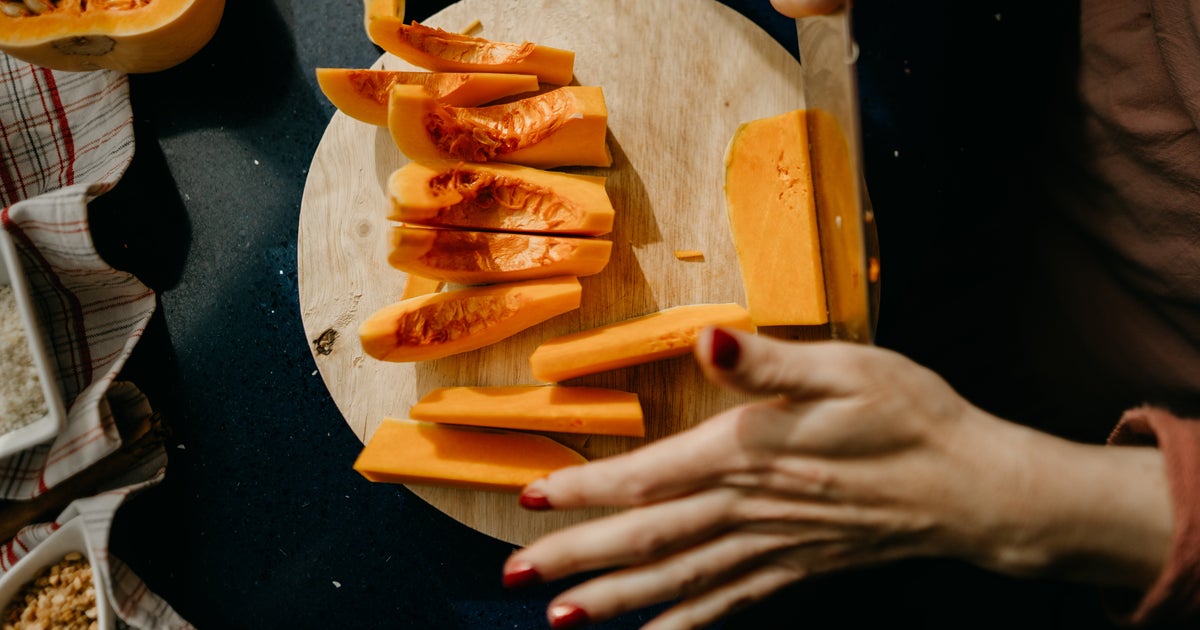If you’ve recently visited your local grocery store or farmers market, you may have noticed a captivating sight. Squashes of varying shapes and sizes have begun to make an appearance, reminding us of the delicious dishes we can create with them, such as roasting, sautéing, and pureeing. Personally, I have a deep affection for squash. Whether it’s an acorn squash, a butternut squash, or a delicata squash, I adore them all. I relish in a warm squash-based soup, a perfectly roasted squash sprinkled with flaky sea salt, and even a handful of butternut squash cubes adorning a fresh salad. However, there’s one issue that plagues me: the fear of cutting anything larger than a delicata squash. As a result, I typically resort to purchasing the pre-cubed squash, which is not only costly, but also detrimental to the environment, and frankly, not as delicious. It was because of this dilemma that I decided to consult with chefs to gather their expert tips for cutting squash without the risk of losing a finger. And here’s the spoiler alert: a sharp knife is key. So, without further ado, here’s everything you need to know about safely cutting squash and handling it afterward.
Choose A Stable Surface And A Long, Sharp Knife
First and foremost, when attempting to cut a large squash, it’s crucial to work on a stable surface to avoid any accidental slips. Neil Bertucci, a chef and content producer at Ingredient, advises using a clean and secure kitchen countertop. You can prevent your cutting board from sliding by placing a damp paper towel or rubber mat beneath it. Now, let’s dive into the process with a long and razor-sharp knife. Billy Parisi, a seasoned chef with over 15 years in the restaurant industry, recommends using at least an 8-inch chef’s knife. If you don’t know the exact length of your knife, Bertucci suggests picking one that is longer than the width of the squash. This will facilitate cutting the squash in half and prevent the knife from getting stuck.
Start Cutting (Very Carefully, Of Course)
Now for the exciting part: Parisi advises beginning the process by laying the squash on its side and raising the knife about 3-4 inches above it. Give it a gentle chop to create an opening. Then, using your other hand, press down on the top of the blade and slice all the way through. It’s important to be able to flatten the squash, making it stable and eliminating any rocking motion. For safety purposes, Bertucci also suggests cutting the squash with intention, focusing, and applying adequate force. To increase your cutting force, grip the knife handle firmly and close to the blade. Additionally, hold the squash steadily with your non-dominant hand. When you’re ready to make the cut, press down firmly with both hands.
Warning: Don’t cut your squash like this! The cut side should be facing down on the cutting board, so the squash doesn’t roll while you attempt to slice it.
After successfully halving your squash, peeling it becomes easier if that’s part of your plan. If the skin feels too tough to peel, simply puncture it a few times with a fork and microwave the squash for approximately three minutes to soften the skin. Allow it to cool until it’s safe to handle, and then proceed with peeling. Bertucci explains that acorn squash, in particular, is challenging to peel before cooking. His advice is to slice it in half, remove the seeds, and cut it into wedges along the squash’s ribs. Once roasted, you can easily peel the skin off using a paring knife.
Another tip from Bertucci is to slice a thin piece off the top and bottom ends of the squash. This will allow the squash to sit flat on the cutting board, preventing it from rolling while you make subsequent cuts. Always place the flat side of the squash down on the cutting board before making any additional cuts. Once you’ve successfully sliced open the squash, it’s time to remove the seeds. Use a spoon to scrape them out. Afterward, cutting the squash into smaller pieces will be a breeze. Place the cut-side down, and you can slice it into half moons or dice it. Alternatively, you can rub the halves with extra-virgin olive oil, salt, and black pepper, before roasting them. The cooked squash will be even easier to cut!
A Few Additional Tips To Keep In Mind
As the saying goes, the first cut is often the deepest. Once you’ve safely sliced your squash in half, you’ve won the initial battle. However, Bertucci has a few extra tips to enhance the process. If you’re working with a butternut squash, he suggests making a third slice right above the bulb while the squash is still on its side. This will separate the distinct shapes of the squash, making it easier to maneuver your knife when peeling (which is best done after slicing the squash in half) and making future cuts. While cutting into a large squash may always be intimidating, with these expert tips, we can all approach the peak squash season with a newfound confidence in our culinary skills.
Denial of responsibility! Vigour Times is an automatic aggregator of Global media. In each content, the hyperlink to the primary source is specified. All trademarks belong to their rightful owners, and all materials to their authors. For any complaint, please reach us at – [email protected]. We will take necessary action within 24 hours.


